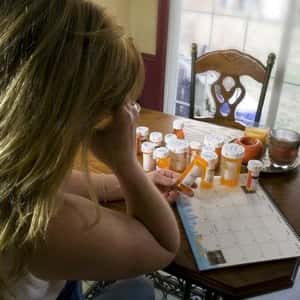
Years ago, children were unlikely to take medication for more than a short period of time such as during an ear infection. That has changed dramatically in recent years, according to a study published in Pediatrics (August 2018). Pharmacist researchers used data from the National Health and Nutrition Examination Survey (NHANES). They found that nearly one-fifth of children and teens had taken at least one medicine during the preceding month. Nearly 14 percent of youngsters take a medication long term, while 7 percent of them were taking drugs for only a short time. Young people who take more than one medicine may experience a dangerous drug interaction.
Who Is Susceptible to a Dangerous Drug Interaction?
As kids get older, they take more medicines. In fact, many children do take more than one medication. Approximately one young person in 12 taking multiple medications may experience a dangerous drug interaction.
This hazard is especially pronounced for teenage girls. Fully one in five taking more than one drug was taking an incompatible combination. Often, an antidepressant and another medicine could trigger a heart rhythm abnormality called a prolonged QT interval. This disruption of the normal heart rhythm can be fatal.
Parents Are Urged to Be Vigilant:
The researchers urge more attention to the potential for hazardous drug-drug interactions, particularly among adolescent girls.
They conclude:
“Treatment and prevention efforts to reduce the burden of adverse drug events in younger populations should be used to consider the role of interacting drug combinations, especially among these individuals.”

